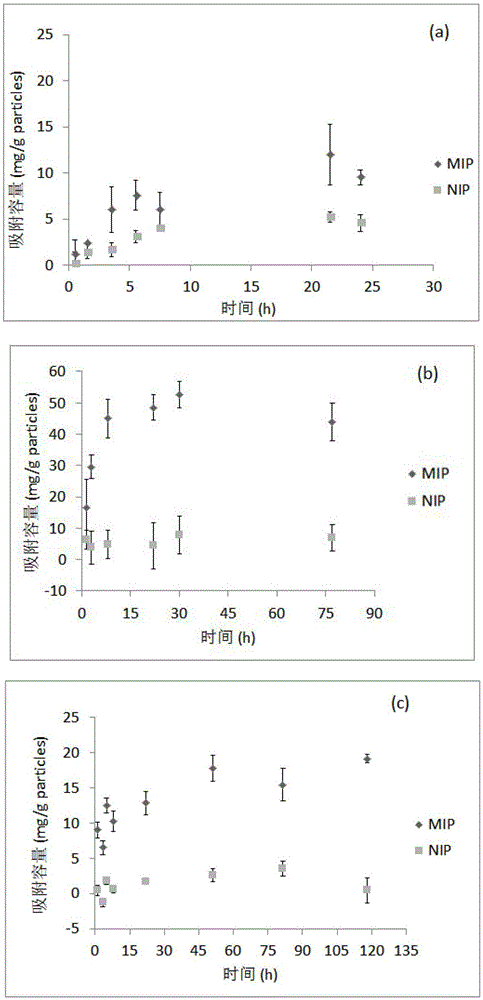Simultaneous imprinting of polymer microspheres with various protein peptides and its preparation and application
A technology of imprinted polymer and molecularly imprinted microspheres, which can be used in the preparation of microspheres, material testing products, microcapsule preparations, etc. Difficult to obtain molecules and other problems, to achieve the effects of conformational stability, improved reproducibility, and increased specificity
- Summary
- Abstract
- Description
- Claims
- Application Information
AI Technical Summary
Problems solved by technology
Method used
Image
Examples
Embodiment 1
[0036] (1) Preparation of multi-epitope PES phase reversed molecularly imprinted microspheres
[0037] In the process of preparing multi-epitope imprinted polyethersulfone (PES) microspheres by self-assembly method, the total mass ratio of polyethersulfone (PES): dimethylacetamide (DMAc): template molecule is 1:4:0.19. The template molecules are three templates: albumin epitope (MKWVTFISL), immunoglobulin G epitope (ASTKGPSVF) and transferrin epitope (MRLAVGALL); The ratio of G and transferrin, the ratio of the above epitopes is 21:5:2. Prepare the ternary pre-assembly solution in the above proportions. At room temperature, the pre-assembly solution was dropped into water drop by drop with a 10# needle to make the PES self-assemble into a ball. Afterwards, the prepared PES microspheres were put into water and heated to remove residual DMAc. Subsequently, the polymer microspheres were washed repeatedly with alcohol / acetic acid (90% by volume of alcohol) solution and ammonia ...
Embodiment 2
[0043] Add two template molecules (albumin epitope and transferrin epitope, ratio??), use PES as the matrix material, use NN-dimethylacetamide as the solvent, and use water as the non-solvent. Others are implemented in the same way Example 1 can get MIP2.
Embodiment 3
[0045] Add two template molecules (albumin epitope and transferrin epitope, ratio??), use PES as matrix material, NN dimethylacetamide as solvent, and 9:1 water-ethanol-alcohol mixture Be non-solvent, other can obtain MIP3 with embodiment 1.
PUM
| Property | Measurement | Unit |
|---|---|---|
| adsorption capacity | aaaaa | aaaaa |
| adsorption capacity | aaaaa | aaaaa |
| adsorption capacity | aaaaa | aaaaa |
Abstract
Description
Claims
Application Information
 Login to View More
Login to View More - R&D
- Intellectual Property
- Life Sciences
- Materials
- Tech Scout
- Unparalleled Data Quality
- Higher Quality Content
- 60% Fewer Hallucinations
Browse by: Latest US Patents, China's latest patents, Technical Efficacy Thesaurus, Application Domain, Technology Topic, Popular Technical Reports.
© 2025 PatSnap. All rights reserved.Legal|Privacy policy|Modern Slavery Act Transparency Statement|Sitemap|About US| Contact US: help@patsnap.com

